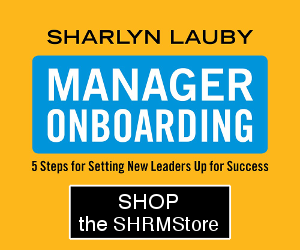(Editor’s Note: Today’s post is brought to you by Readex Research, which provides expert survey services to help businesses understand their internal and external customers. Their services include employee experience surveys. Enjoy the post!)
Two important pieces of any organizational initiative are planning and execution. Planning helps set the foundation for any project. We use planning time to allocate resources, set expectations, and establish milestones for completion.

When it comes to execution, I’m reminded of the book “Execution: The Discipline of Getting Things Done” by Larry Bossidy and Ram Charan. Particularly, that execution involves continuous improvement. If organizations want to get really good at execution, they should try to find what works well and include some sort of regularity to their efforts.
4 Survey Planning and Execution Strategies
The same holds true for employee engagement surveys. If you want a survey to be successful, it needs to be planned and executed well. Here are four strategies to consider when planning and executing a survey:
STRATEGY #1: The survey needs to have a vision and an objective.
Think of a survey vision like an organization’s vision. It’s that picture of what we want the organization to look like in the future. In this case, with a survey, it’s the picture of what we want the survey to look like. The objective is the target we’re trying to accomplish.
A good place to start this conversation about vision and objectives is with the purpose of the survey. What are the reasons that the survey is being conducted? And let me suggest that “because we’ve always done it” really shouldn’t be the reason. As you’re thinking about the why, start considering the “categories” or areas of information you’re trying to gather.
- Relationships and Culture – How are employees interacting with others? What do they feel while on the job?
- Compensation and Benefits – Reactions to pay and benefits offered.
- Communication – Opinions about the dialog that happens at work. Do employees feel comfortable that they can speaking freely?
- Management and the Company – Views on top leadership and the organization.
- Employee Experience – What’s the overall employee experience like?
The final piece of the vision strategy is to discuss how the organization will use the survey results. Visioning not only supports the purpose but it also helps in content design. If you can’t see how you will use pieces of data, then ask yourself if it really needs to be in the survey.
Surveys send the message to employees that the company values their feedback and is open to making changes. It could be detrimental to the survey results to ask for employee feedback in an area that the company has no intention of changing. For instance, don’t ask questions about flexible schedules if you aren’t able (or willing) to offer them. Spending time developing a clear vision and objectives for your employee engagement surveys will drive the rest of the development and implementation.
STRATEGY #2 – The survey content should be well-crafted.
Remember that technology term, “Garbage in; garbage out” (GIGO)? When it comes to developing survey content, that’s the key. If the organization develops poorly worded content, it will get poor information and data. This is one strategy that organizations shouldn’t skimp on. (Well, you shouldn’t skimp on any of these strategies…but if I had to pick one that HR needs to hold firm on…this is it.)
If you have been trained on proper survey development, then by all means, do this in-house. However, most of us haven’t, which is why we might want to seek professional expertise. There are two ways to design items:
Work with professionals to create good content. There are many qualified consultants and firms that can create content for your employee engagement surveys. The advantage to hiring a third party to create your survey content is that they can create unique content. The disadvantage is that this unique content can be expensive and time consuming.
Work with pre-developed content. Another option for businesses that’s more budget-friendly and faster to implement is creating a survey using content that has already been developed. Companies get the benefit of using proven content. And while it’s not unique content, organizations should ask themselves…does it really need to be?
As part of content development, it would be beneficial to reach consensus on a handful of benchmarking items. This content would appear in future surveys as a way for the organization to compare results and build a historical trend. For example, if the organization plans to experience several major changes over the next few years, it could be helpful to have a series of benchmarking items to gauge how the business changes are impacting employee engagement. A few sample benchmarking items are:
- I know what is expected of me at work.
- I receive adequate recognition for good work.
- The work I do is important to meeting the mission of [Company].
- I can speak freely to my supervisor on a variety of topics.
- The information I receive from management is straightforward and honest.
- My supervisor and I have a good relationship.
STRATEGY #3 – The survey should align with the organization’s brand and culture.
Even when the organization partners with an outside consultant to administer employee engagement surveys, it doesn’t change who owns the survey. It’s the company’s survey. As such, it needs to look and feel like the rest of the company’s communications.
The survey should include the company logo and images that employees associate with the company. In addition, the content needs to sound like the company. So, if the company marketing is edgy, the survey needs to have that edgy feel too.
In case anyone is wondering, having the look and feel of the survey content align with the other company communication doesn’t diminish or compromise the survey content. It fact, it actually makes employees more comfortable with taking the survey and sharing their open, honest feedback. And that’s what this is all about.
Speaking of open, honest feedback, organizations need to consider offering their employee engagement surveys in the languages that employees are most comfortable communicating in. I can tell you from my own experience with surveys, we received much richer information from employees when they were able to share feedback in their preferred language – even if the employee spent the majority of their working day speaking English. It’s about creating a survey environment that is accommodating to the way employees want to share their thoughts.
Which leads me to my last point. Organizations need to think about the different mediums that are available to conduct their employee engagement surveys. I know we spend a lot of time here on HR Bartender talking about the growing numbers of people with smartphones and tablets…and all of that is true. But everyone does not have access to the same technology or internet. So, it’s important to provide options. The most common survey mediums include online using a mobile responsive website, interactive voice responsive (IVR), and of course, paper and pen with a sealed envelope.
Oh, and I would encourage companies not to knock the good old-fashioned pen and paper option. I realize that technology makes surveys very accessible. And technology would be a preferred option. But, for employees who spend hours on planes and in remote locations, the pen/paper option could be a perfect place to complete a survey in peace and quiet.
STRATEGY #4 – The survey should create an inviting process.
Participation is important in any kind of survey. The way to get participation is by making employees feel their feedback is welcome and respected.
Organizations should announce the survey to all employees, including an outline of the process. If the company is using an outside firm to administer the survey, the announcement should include an introduction to the survey company.
Employees want to know that the organization they are sharing personal information with is credible. They want to trust the company they are giving feedback to. By defining the process and people involved with the process, it brings credibility to the survey and the survey results.
The other piece that increases participation is respecting participant’s time. I think we’ve become a society where shorter is better. According to Readex CEO Jack Semler, 25 – 30 items is a good range for employee engagement surveys. “All of us in survey research know this: Without willing participants, we have nothing. This is why it is vitally important to be aware of and respectful of the time it takes to complete a survey. The fact is that survey participation depends on many things. For example, customers will be more likely to fill out a survey than non-customers. However, this wouldn’t give the sponsoring company the license to ask 100 questions! Keep surveys focused and limited to what you need to know. Leave out questions that are merely nice to know.”
Finally, as much as the survey will be a priority for HR and consume their time, it will not have the same priority for everyone. Plan on a few reminders during the survey window. That’s the great thing about technology, you can schedule those in advance. That being said, you might want to consider telling employees that in the initial survey announcement. So, they don’t get a reminder that think the company doesn’t have their survey responses. (smile.)
Bookmark This! It’s Your Survey Blueprint
Employee engagement surveys are important – to the employee and the company. But they are only as good as the information you get from them. Proper planning and execution will yield good information.
Readex has created an excellent downloadable one-page reminder titled “6 Guidelines for Successful Survey Content and Design”. You might want to bookmark it for future reference.
7









[…] employee engagement survey. You’ve used the principles of survey research to design the survey. The survey was implemented well and received high […]